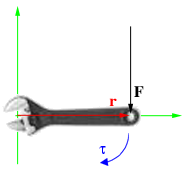Hanois Lighthouse is important in the development of lighthouse engineering, because not only all the stones in each course but also all the courses were dovetailed together to form one solid mass. Various methods of jointing the stones in rock towers have been employed. Smeaton developed the use of granite blocks for rock towers, and he connected them together with metal pins and marble dowels. Alan Stevenson used a similar method in the construction of the Skerryvore Lighthouse, whilst his father, Robert Stevenson, arranged stones of each course in the Bell Rock, so that they formed a series of dovetails. In this manner each course locked together into a solid single unit, and the courses were then pinned together. It was James Douglass who suggested that the stones might be dovetailed together both laterally and vertically. The cement mortar in the joint formed between the faces so locked the dovetails that the stones cannot be separated without being broken. This method was first employed at the Hanois Lighthouse, and it became the pattern for all sea rock towers.
A helideck was constructed above the lantern in 1979. Automation work began at the Hanois Lighthouse in July 1995 and the station was demanned in January 1996. The station was converted to solar power with panels mounted around the lower part of the helideck support structure.
A new two position lampchanger with 35 watt metal arc lamps was installed within the existing optic, the rotation of which was slowed down changing the character of the light from 2 white flashes every 5 seconds to 2 every 13 seconds. This is to keep the power requirement low enough to allow solarisation and to increase the length of the flash to achieve the required 20 mile range.
Specifications
| Established | 1862 |
| Height Of Tower | 33 Metres |
| Height Of Light Above Mean High Water | 33 Metres |
| Automated | 1996 |
| Lamp | 35 Watt Metal Arc Lamp |
| Optic | 4th Order Rotating Optic |
| Character | White Group Flashing Twice Every 13 Seconds |
| Intensity | 89,900 Candela |
| Range Of Light | 20 nautical miles |
| Fog Signal Character | Sounding Twice Every 60 Seconds |
| Fog Signal Range | 2 nautical miles |
Position 49 26.2 N 02 42.1 W































































































.jpg)


















































































































